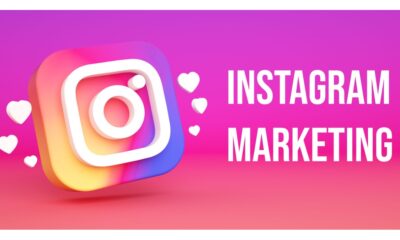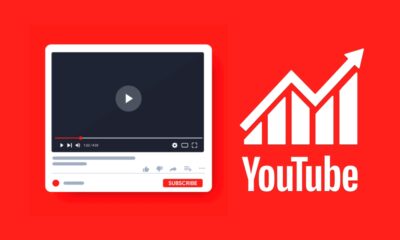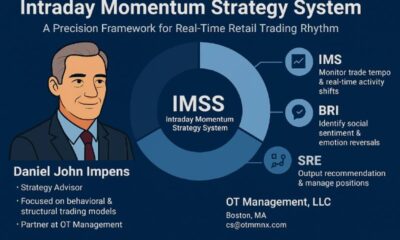Business
3 Best Strategies for Using Influencer Marketing in Direct Sales

Marketing leaders around the world will invest approximately $24 billion in influencer marketing this year, because of the channel’s capacity to increase quality awareness and consideration. However, it is more challenging to demonstrate the creator’s influence on direct sales. In addition, brands can and should do more to improve direct sales inspired by influencer recommendations, even though implementing a metrics-driven strategy is a part of the solution.
To help your brand increase direct sales from creator efforts, here are three key strategies.
- Change your colleagues. As an effective means of connecting with customers, many brands select the most well-known influencers with the largest followings. However, relevant expertise is just as important as follower counts when it comes to driving sales from creator recommendations. Micro-influencers with 10,000 to 100,000 followers frequently perform better when promoting direct sales.
Why? Micro-influencers are frequently regarded as experts in topics that have a significant impact on sales, such as inclusive clothing, organic beauty products, craft beer, and food delivery subscriptions. It is possible to find related micro-influencers for almost any product that is already driving purchases in the same or related product categories.
Additionally, as with all forms of media, smaller audiences typically result in significantly lower costs per customer reached. You can build relationships with many micro-influencers and even reach niche markets and demographics with the same money you spend on big “macro” creators.
Lastly, working with micro-influencers need not be an all-or-nothing choice. You don’t have to sever productive, ongoing relationships with top creators. You can tailor your partner mix to your individual requirements by allocating a portion of your budget to micro-influencers based on the importance of sales conversions among your targets.
- Grow your partnership. Traditionally, the “burst” model was used to manage influencer marketing, in which brands engage with influencers for short periods to promote special initiatives. Most creators would prefer long-term engagements with brands they believe in, even though creators certainly appreciate the revenue from a promotional flight or product launch.
Long-term commitments enable them to be authentic in their recommendations and provide them with greater revenue predictability. You can build stronger relationships with your influencers that will pay you more in the long run by rewarding them regularly and communicating frequently.
Short-term programs are also a remnant of arm’s-length media agreements, in which audiences and space are sold to whoever wants them. For the trust that brands and influencers need, ongoing partnerships are better. Marketers ensure that creators put in even more effort to achieve their goals by adhering to the creator’s voice and business.
- Change how you get paid. A lot of brands want to move away from pay-per-post or flat-fee models of influencer compensation and toward sales-based models. Sadly, the majority of influencers shudder at the uncertainty surrounding revenue. Pay-per-post and flat fees ensure that rent is paid and that the fridge stays full. In addition, influencers do not see themselves as salespeople but rather as creators, entertainers, and trusted advisors. Engaging with a brand that insists on compensation based on sales may appear to be a path to selling out.
De-risking the transition to sales-based compensation is the solution. As you build stronger relationships with your best partners, your payment model can change. To begin tracking the impact of direct sales, for example, establish a relationship with post-based payment models and include affiliate-style links in messages. Once this is done, you can connect with your creators to show them how many sales they are naturally driving and to show them new ways to make more money by changing their primary method of payment.
Starting slowly is essential. Start with a hybrid flat fee and a bonus-for-sales model after you have established trust. An influencer is more likely to trust your intentions if you respect their creative freedom. If you can demonstrate how well it will benefit them (and not just you), you may be able to transition later to sales-based compensation in its entirety.
Making small changes can make a big difference
Under any of these suggestions, you are not required to immediately make significant adjustments to your creative efforts. Instead, each is an evolutionary strategy that can be implemented at a pace that works for your business. You can drive the sales you need now and the full-funnel impact that builds your business for the long term by proactively managing and nurturing these increasingly important business relationships.
-

 Sports4 weeks ago
Sports4 weeks agoFIFA Club World Cup 2025: Complete List of Qualified Teams and Groups
-

 Sports3 weeks ago
Sports3 weeks agoAl Ahly vs Inter Miami, 2025 FIFA Club World Cup – Preview, Prediction, Predicted Lineups and How to Watch
-
Health2 weeks ago
Back to Roots: Ayurveda Offers Natural Cure for Common Hair Woes
-

 Tech2 weeks ago
Tech2 weeks agoFrom Soil to Silicon: The Rise of Agriculture AI and Drone Innovations in 2025
-

 Sports3 weeks ago
Sports3 weeks agoFIVB Men’s Volleyball Nations League 2025: Full Schedule, Fixtures, Format, Teams, Pools and How to Watch
-

 Startup3 weeks ago
Startup3 weeks agoHow Instagram Is Driving Global Social Media Marketing Trends
-

 Television4 weeks ago
Television4 weeks agoTribeca Festival 2025: Date, Time, Lineups, Performances, Tickets and How to Watch
-

 Sports3 weeks ago
Sports3 weeks agoWorld Judo Championships 2025: Full Schedule, Date, Time, Key Athletes and How to Watch



















